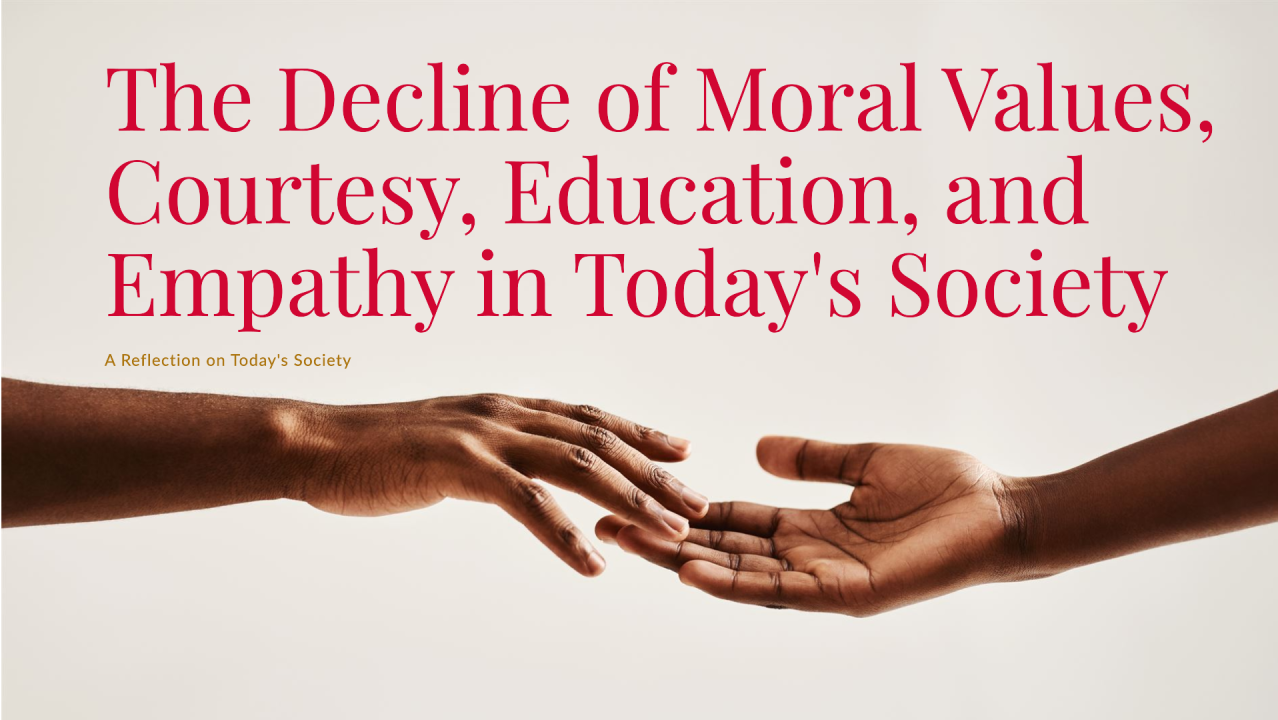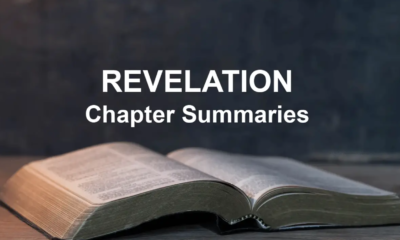End Times Updates
Signs of the End of Age
The signs of the end of the age are numerous and varied, ranging from natural disasters and wars to the rise of false messiahs and the persecution of believers

What signs show the coming of the Messiah has drawn near?
The Signs of the End of the Age: An In-depth Examination
The concept of the “end of the age” is a central theme in Christian eschatology. It refers to the culmination of human history as prophesied in the Bible, with the return of Jesus Christ, the final judgment, and the establishment of God’s eternal kingdom. Various signs, as described in Scripture, are said to precede this climactic event. These signs are scattered throughout the Bible, particularly in the Gospels, the Letters of the New Testament, and the prophetic books of the Old Testament.
This examination will provide an in-depth analysis of the key signs of the end of the age, drawing from biblical texts and interpreting them in light of both historical and contemporary events. We will explore the signs as they are presented in the Gospels, the Book of Revelation, and other prophetic writings, considering their implications for Christians and how believers should respond in anticipation of the end times.
1. The Significance of the End of the Age
Before delving into the specific signs of the end of the age, it is important to understand the theological context of these events. The Bible describes the end of the age as a time when the current order of creation will give way to a new one. This period is often referred to as the “last days” or the “end times.” The end of the age is closely associated with:
- The Return of Jesus Christ: The second coming of Christ is the pivotal event that ushers in the final judgment and the establishment of God’s kingdom. Jesus Himself promises to return in glory, but no one knows the exact time or day of His coming (Matthew 24:36).
- The Resurrection of the Dead: The end of the age involves the resurrection of both the righteous and the wicked. Those who have died in Christ will be resurrected to eternal life, while the wicked will face judgment and eternal separation from God (John 5:28-29, 1 Thessalonians 4:16-17).
- The Final Judgment: At the end of the age, all people will stand before God’s throne to be judged based on their faith in Christ or rejection of Him. This judgment will determine their eternal destiny, either in heaven or hell (Matthew 25:31-46, Revelation 20:11-15).
- The New Heaven and New Earth: Following the final judgment, God will create a new heaven and a new earth where righteousness dwells, and His people will live in His presence forever (Revelation 21:1-4, Isaiah 65:17-25).
The end of the age is both a warning and a promise. It serves as a reminder of the need for vigilance, faithfulness, and repentance, while also offering the hope of ultimate redemption and restoration.
2. Signs in the Gospels: Jesus’ Teachings on the End Times
One of the most detailed and significant sections of Scripture regarding the signs of the end of the age is found in Jesus’ teachings. In Matthew 24, Mark 13, and Luke 21, Jesus outlines several signs that will precede His return. These teachings, often referred to as the Olivet Discourse, are considered by many scholars to be a key source of eschatological understanding.
Deception and False Messiahs (Matthew 24:4-5, Mark 13:5-6, Luke 21:8)
The first sign that Jesus mentions is the rise of false prophets and messiahs. He warns that many will come claiming to be the Christ, deceiving many people. This warning is crucial because deception is one of the primary strategies used by the enemy to lead people astray. False messiahs and prophets will perform signs and wonders, but their teachings will not be in accordance with the truth of the Gospel. Christians are urged to be vigilant and discerning, holding fast to the truth of Scripture.
Wars and Rumors of Wars (Matthew 24:6-7, Mark 13:7-8, Luke 21:9-10)
Jesus also foretold that there would be wars and rumors of wars. The presence of conflict and violence, both between nations and within societies, is seen as a sign of the coming end. These wars reflect the brokenness of the world and the increasing hostility between the forces of good and evil. However, Jesus warns that these events do not yet signify the end, but rather that they are the beginning of the birth pains—a sign of the impending judgment.
Natural Disasters: Earthquakes, Famines, and Plagues (Matthew 24:7, Mark 13:8, Luke 21:11)
Jesus also speaks of natural disasters such as earthquakes, famines, and plagues, which will become more frequent and intense as the end of the age approaches. These events serve as reminders of the fallen state of the world and the consequences of sin. While natural disasters have always occurred throughout history, the Bible suggests that in the last days, these events will become more widespread and severe, pointing to the urgency of preparing for Christ’s return.
Persecution of Christians (Matthew 24:9-10, Mark 13:9-13, Luke 21:12-19)
Another sign Jesus gives is the persecution of His followers. Christians will face hatred, imprisonment, and even death for their faith. This persecution will come from both governments and religious leaders, and many will be tempted to turn away from their faith. Jesus encourages His disciples to endure to the end, assuring them that those who persevere will be saved. The persecution of believers in the last days will be a powerful test of their faith.
The Proclamation of the Gospel (Matthew 24:14, Mark 13:10, Luke 21:13)
Despite the challenges, Jesus also foretells that the Gospel will be preached to all nations before the end comes. The proclamation of the Gospel is an essential sign of the end of the age because it signifies the fulfillment of God’s plan to reach all people with His message of salvation. This global evangelization is a key indicator that the time for Christ’s return is drawing near.
The Abomination of Desolation (Matthew 24:15-16, Mark 13:14, Luke 21:20)
In all three Gospels, Jesus speaks of the “abomination of desolation” spoken of by the prophet Daniel (Daniel 9:27, 11:31, 12:11). This event involves the desecration of the holy place—likely referring to the Jewish temple in Jerusalem. Jesus warns that when this event occurs, those in Judea should flee to the mountains. This sign is often interpreted as a foreshadowing of the rise of the Antichrist and the desecration of the temple before the final judgment.
Cosmic Signs (Matthew 24:29-30, Mark 13:24-26, Luke 21:25-27)
As the return of Christ draws near, Jesus speaks of cosmic signs in the heavens. The sun will be darkened, the moon will not give its light, and the stars will fall from the sky. These signs point to the dramatic and supernatural nature of Christ’s return. It is a signal that the entire universe will bear witness to the return of its Creator, marking the end of the age.
3. The Signs of the End of the Age in the Book of Revelation
The Book of Revelation, written by the Apostle John, contains a series of visions that provide a detailed account of the end of the age. Revelation describes the final judgment, the return of Christ, and the ultimate victory of God over the forces of evil. Many of the signs of the end of the age found in Revelation parallel those mentioned in the Gospels but are expanded upon with greater detail and symbolism.
The Seven Seals (Revelation 6:1-17)
The opening of the seven seals by the Lamb is a key event in the unfolding of the end times. As each seal is broken, various judgments are unleashed upon the earth. These judgments include war, famine, death, and natural disasters, as well as the suffering of the martyrs. The seals represent the unfolding of God’s plan to bring about the final judgment, which will culminate in the return of Christ and the establishment of His kingdom.
The Seven Trumpets (Revelation 8:6-9:21, 11:15-19)
Following the breaking of the seals, seven angels sound trumpets, each bringing further judgments upon the earth. The trumpets signal the intensification of God’s judgment and the beginning of the end. The events triggered by the trumpets include catastrophic natural disasters, demonic plagues, and the wounding of the earth’s inhabitants. The trumpet judgments emphasize the gravity of the end times and the urgency of repentance.
The Beast and the Antichrist (Revelation 13:1-18)
One of the most significant signs of the end of the age is the rise of the Antichrist, described in Revelation as the Beast. This figure will lead a global empire and demand worship from all people. The Beast will persecute Christians, and those who refuse to worship him will face severe punishment. The number 666, often associated with the Beast, symbolizes imperfection and rebellion against God. The rise of the Antichrist is a critical event in the end times and a sign that the final battle between good and evil is imminent.
The Final Battle (Revelation 16:12-16, 19:11-21)
The final battle between the forces of evil, led by the Beast and the False Prophet, and the forces of good, led by Christ, is a central event in Revelation. This battle, known as Armageddon, will take place at the end of the age. Christ will defeat His enemies and establish His kingdom. The victory of Christ over the forces of evil marks the end of history and the beginning of the eternal reign of God.
The New Heaven and New Earth (Revelation 21:1-4)
Following the final judgment and the defeat of evil, God will create a new heaven and a new earth. The old order of things will pass away, and God will dwell with His people in perfect peace and harmony. This new creation represents the ultimate fulfillment of God’s promises and the restoration of all things.
4. How Should Christians Respond to the Signs of the End of the Age?
While the signs of the end of the age are clear and vivid, the Bible also calls Christians to respond in specific ways. The end of the age is not meant to be a cause for fear or anxiety but an invitation to live faithfully in anticipation of Christ’s return.
Be Watchful and Prepared
Jesus consistently urges His followers to be watchful and prepared for His return. In Matthew 24:42, He says, “Therefore keep watch, because you do not know on what day your Lord will come.” Christians are called to live in anticipation of Christ’s return, always ready to give an account of their lives.
Live Holy Lives
In 2 Peter 3:11-12, Peter urges believers to live holy and godly lives as they await the coming of the day of God. The knowledge that the end of the age is approaching should motivate Christians to live with integrity, righteousness, and a commitment to serving others.
Proclaim the Gospel
Jesus emphasized the importance of spreading the Gospel to all nations before the end of the age (Matthew 24:14). Christians are called to actively engage in evangelism, sharing the hope of Christ with the world, particularly in light of the urgency of the times.
Persevere in Faith
Finally, Christians are called to persevere in faith, even in the face of persecution, trials, and hardship. Revelation 2:10 encourages believers, saying, “Do not be afraid of what you are about to suffer. I tell you, the devil will put some of you in prison to test you, and you will suffer persecution for ten days. Be faithful, even to the point of death, and I will give you life as your victor’s crown.” The end of the age is a time for believers to stand firm in their faith and endure to the end.
Conclusion
The signs of the end of the age are numerous and varied, ranging from natural disasters and wars to the rise of false messiahs and the persecution of believers. However, these signs are not meant to frighten Christians but to remind them of the urgency of living faithfully and sharing the Gospel. The end of the age is ultimately a time of hope, as it marks the return of Jesus Christ and the establishment of God’s eternal kingdom. As believers, we are called to be watchful, holy, and faithful as we await the glorious return of our Savior.
Christian Life
The Tragedy of Moral Decay in Higher Learning institutions
Explore the growing moral decay in higher learning institutions, its causes, consequences, and impact on academic integrity and societal values.

For years, universities, Colleges and other Higher learning institutions were seen as places of intellectual growth and character development. However, many higher learning institutions today have become breeding grounds for moral decadence, where students and even lecturers engage in behaviors that destroy both academic integrity and personal values. From unchecked sexual immorality to rampant substance abuse, violence, and corruption, the decay runs deep.
Sexual immorality is one of the biggest stains on campus life. What was once considered shameful has become normal, even celebrated. Fornication is common, with students engaging in casual relationships driven by lust rather than love. Many young women fall victim to deceitful love affairs, only to be left heartbroken and used.
The normalization of lesbianism and homosexuality has also taken root. Some students, influenced by peer pressure or curiosity, experiment with same-sex relationships, leading to moral confusion and identity crises. Others engage in secret affairs with older partners or even lecturers who manipulate them in exchange for better grades or
financial benefits. Adultery is rampant, with some married lecturers preying on students, turning the academic environment into a den of sexual corruption.
Academic dishonesty is another deep-seated issue. Hard work and diligence are now seen as outdated concepts, replaced by cheating, bribery, and leaked examination papers. Some students no longer feel the need to study, relying instead on corrupt lecturers who sell grades to the highest bidder. The value of education has been reduced to a mere transaction, and many graduates leave university without the knowledge or skills needed to succeed.
Campus life has also become synonymous with drug and alcohol abuse. The pursuit of pleasure has overtaken the pursuit of knowledge. Many students indulge in excessive drinking, turning nights into a blur of parties and reckless behavior. The use of drugs—marijuana, cocaine, and other harmful substances—has become widespread, with some students getting addicted and ruining their futures.
Smoking is no longer seen as a bad habit but as a sign of independence and “maturity.” Shisha lounges and secret drug dens operate freely, drawing in young people who waste their lives in addiction. Many students skip classes, spending their time in bars and drug joints rather than in lecture halls.
As morality declines, violence increases. The lack of self-control and discipline among students has led to tragic incidents of stabbings and deadly fights. Many of these cases stem from toxic love triangles, where jealousy and betrayal push students to take extreme actions.
Reports of students stabbing each other to death over relationships have become disturbingly common.
A boyfriend catches his girlfriend texting another man and, in a fit of rage, pulls out a knife. A girl, blinded by jealousy, attacks a fellow student over suspicions of an affair. Such incidents reveal the deep emotional instability and lack of moral guidance among students, leading to irreversible consequences.
Campus hostels, once meant to be safe spaces for students, have become crime scenes where love-fueled violence erupts. Arguments escalate into fistfights, and fistfights turn into stabbings. Instead of resolving conflicts through dialogue, students resort to deadly force, ending promising lives before they even begin. The inability to manage emotions, coupled with the influence of drugs and alcohol, has made universities hotbeds of violence.
With all these vices comes an inevitable consequence: depression and hopelessness. Many students, trapped in toxic relationships, addiction, and academic failure, fall into deep despair. The pressure to fit into this morally decayed society leaves many feeling empty and worthless.
End Times Updates
A Nation in Crisis: In Search of Redemption.

For a nation plagued with incessant successive crises on the verge of imploding, Kenya seems resigned to the fatalistic tendencies. Deficient urgency and abundant indifference appear to be the modus operandi, ‘Borauhai’ being the de facto national motto. So compromised is the national psyche that doing what’s right is scorned and decadence is appreciated.
While once she had grand ambitions of joining the League of the Mighty, Kenya is now contented with feeding on crumbs. Not long ago, she aspired to be the African version of the Asian Tigers, but now a beggar’s bowl goes ahead of her. It is incumbent upon her people, therefore, to rewind and reflect on when she lost her way and restore her Zeitgeist.

The nation’s soul is at stake; deeply spiritual as she is, the current situation leaves a lot to be desired. Congregations are shrinking while the number of churches is mushrooming exponentially. Suffice it to say, the Church is in a conundrum. While once emanating from the pulpit was God’s love and a place in heaven, the priesthood is now fixated on the materialistic.
There seem to be no limits to the lows the Church is willing to pander to in pursuit
of the worldly.
While Christ Jesus drove out those hawking merchandise in God’s temple, a sad reality of the pulpit is now an auction for the highest bidder, disregarding its sanctity. Politicians now campaign and deceive from the pulpit.
The hapless congregants are left wondering if there is another way, all while charlatans and fraudsters prey on the trusting. All hope seems lost, the gospel binned and replaced by treaties on wealth and mortal indulgence.
Amidst all these controversies, scandals, and leadership wrangles in the church, there appears one bucking this trend. Insisting on the need to go back to the ways of the first church, and the eminence of the Bible [SolaScriptura], is one Prophet Dr. Owour. In the face of ceaseless adversity, he has consistently preached on the coming of Jesus based on the sacred texts with unmatched zest.
Perhaps implosion is not inevitable; there just might be hope for the nation!
End Times Updates
What is Rapture
The concept of the “Rapture” holds a significant place in Christian eschatology, the study of the end times.

The concept of the “Rapture” holds a significant place in Christian eschatology, the study of the end times. While interpretations of the Rapture vary among different Christian denominations, it is generally understood as an event in which believers in Jesus Christ are caught up from the earth to meet the Lord in the air. This event is associated with the Second Coming of Christ, and it marks the beginning of a series of transformative and apocalyptic events that will culminate in the fulfillment of God’s divine plan for the world.
This essay aims to explore the Rapture in-depth, examining its biblical foundations, theological implications, historical development, various interpretations, and its significance in the broader context of Christian eschatology. Understanding the Rapture requires careful attention to the scriptures, theological viewpoints, and the various perspectives that have shaped Christian thought over the centuries.
1. Biblical Foundation of the Rapture
The term “Rapture” itself is not found in most translations of the Bible. It is derived from the Latin word rapio, meaning “to seize, carry off, or snatch away,” which is used in the Latin Vulgate translation of 1 Thessalonians 4:17. In this verse, the Apostle Paul describes the event where believers will be “caught up” to meet Christ in the air. This passage, along with several other key texts, forms the biblical foundation for the doctrine of the Rapture.
A. 1 Thessalonians 4:13-18
The primary passage in support of the Rapture is 1 Thessalonians 4:13-18, where Paul comforts the believers in Thessalonica concerning those who have died in Christ. He writes:
“For the Lord himself will come down from heaven, with a loud command, with the voice of the archangel and with the trumpet call of God, and the dead in Christ will rise first. After that, we who are still alive and are left will be caught up together with them in the clouds to meet the Lord in the air. And so we will be with the Lord forever. Therefore encourage each other with these words.” (1 Thessalonians 4:16-18, NIV)
This passage describes an event where the living and the resurrected believers are “caught up” together to meet the Lord. The term “caught up” (Greek harpazo) is often understood as a snatching away or a quick and forceful gathering. This is the basis for the concept of the Rapture in many Christian teachings, which hold that the faithful will be taken up to be with Christ before a period of great tribulation on earth.
B. 1 Corinthians 15:51-52
Another key passage is found in 1 Corinthians 15:51-52, where Paul writes about the transformation of believers at the resurrection:
“Listen, I tell you a mystery: We will not all sleep, but we will all be changed—in a flash, in the twinkling of an eye, at the last trumpet. For the trumpet will sound, the dead will be raised imperishable, and we will be changed.” (1 Corinthians 15:51-52, NIV)
This passage provides a further description of the transformation of believers, as they are changed in a moment at the sound of the last trumpet. It echoes the idea of a sudden, dramatic event where the faithful are transformed and taken to be with the Lord.
C. Matthew 24:36-42 and Revelation 16:15
Though not directly mentioning the Rapture, passages like Matthew 24:36-42 and Revelation 16:15 are often cited to support the belief in a separation between the righteous and the wicked in the end times. In Matthew 24, Jesus speaks of the suddenness of His return, comparing it to the days of Noah when people were taken and others left behind:
“Two men will be in the field; one will be taken and the other left. Two women will be grinding with a hand mill; one will be taken and the other left.” (Matthew 24:40-41, NIV)
Some interpret this as a reference to the Rapture, where believers are taken while others are left behind. Similarly, in Revelation 16:15, a warning is given to stay awake, which some interpret as a call for readiness for the Rapture.
2. Theological Interpretations of the Rapture
Over time, different Christian denominations and theologians have developed varying interpretations of the Rapture. These interpretations generally fall into four main categories: Pre-Tribulation, Mid-Tribulation, Post-Tribulation, and Pre-Wrath Rapture. Each perspective holds different views about when the Rapture will occur in relation to the Tribulation—a seven-year period of intense suffering and judgment described in the Bible.
A. Pre-Tribulation Rapture
The Pre-Tribulation Rapture theory posits that Christians will be taken up before the Tribulation period begins. This view became especially popular in the 19th century with the rise of dispensationalism and was made widely known through the writings of John Nelson Darby and the Left Behind series of novels. According to this view, the faithful are removed from the earth to avoid the coming wrath, and the Tribulation period is seen as a time of judgment for the unbelieving world.
- Support for Pre-Tribulation Rapture: Proponents of this view often cite 1 Thessalonians 4:16-17 and 1 Corinthians 15:51-52 as evidence that believers will be taken before the period of suffering. They argue that the Church is not destined for wrath, as seen in passages like 1 Thessalonians 5:9: “For God did not appoint us to suffer wrath but to receive salvation through our Lord Jesus Christ.”
- Theological Implication: The Pre-Tribulation Rapture emphasizes God’s grace and mercy toward His people. It views the Church as distinct from Israel and sees the Tribulation as primarily focused on the Jewish people and the nations that have rejected Christ.
B. Mid-Tribulation Rapture
The Mid-Tribulation Rapture theory suggests that believers will be caught up at the midpoint of the Tribulation, after three and a half years of intense persecution and suffering. This view posits that Christians will experience the early part of the Tribulation but will be spared from the worst of God’s wrath, which is believed to occur during the second half of the Tribulation.
- Support for Mid-Tribulation Rapture: Advocates of this view point to Revelation 11:15-19 and the trumpet judgments as evidence that the worst part of God’s wrath comes after the first three and a half years. They argue that the “last trumpet” mentioned in 1 Corinthians 15:52 refers to the seventh trumpet in Revelation, signaling the rapture at the midpoint of the Tribulation.
- Theological Implication: This view balances the belief that Christians will face some suffering during the Tribulation but will be spared from the ultimate judgment that follows. It reflects a view of God as both just and merciful, allowing believers to endure some tribulation but not the full outpouring of wrath.
C. Post-Tribulation Rapture
The Post-Tribulation Rapture theory posits that believers will be taken up at the end of the Tribulation, after enduring the full seven years of suffering and judgment. This view holds that the Rapture and the Second Coming of Christ are one and the same event, meaning that Christians will go through the Tribulation but will be caught up to meet Christ as He returns to establish His Kingdom.
- Support for Post-Tribulation Rapture: Those who hold this view emphasize passages like Matthew 24:29-31, which describe the return of Christ after the Tribulation, and argue that the Rapture will occur simultaneously with Christ’s Second Coming. They point to the idea that believers are not promised exemption from suffering and that the Church’s mission includes enduring trials and tribulations.
- Theological Implication: The Post-Tribulation view emphasizes the idea of perseverance and faithfulness in the midst of trials. It teaches that Christians will face suffering for Christ’s sake but will ultimately be delivered and rewarded at the end of the Tribulation.
D. Pre-Wrath Rapture
The Pre-Wrath Rapture theory is a more recent interpretation that suggests believers will be taken up shortly before the outpouring of God’s wrath at the end of the Tribulation. This view combines aspects of both the Pre-Tribulation and Post-Tribulation perspectives, holding that the Church will face the tribulation but will be spared from the worst of God’s judgment.
- Support for Pre-Wrath Rapture: This view emphasizes the idea that the Church will not face God’s wrath but will experience persecution and suffering during the Tribulation. It is based on passages like Revelation 6:12-17, where God’s wrath is poured out after the opening of the seals, which some argue happens near the end of the Tribulation.
- Theological Implication: The Pre-Wrath view sees the Church as undergoing some judgment but ultimately being spared from the worst of God’s wrath. It suggests that God’s wrath is separate from the Tribulation, and the faithful will be taken up just before that final judgment.
3. The Rapture in the Broader Context of Christian Eschatology
The Rapture is often understood within the broader context of Christian eschatology, which includes various events such as the Tribulation, the rise of the Antichrist, the Battle of Armageddon, and the ultimate establishment of God’s Kingdom on earth. Understanding the Rapture requires considering these events as part of a timeline of the end times, as described in the Bible.
A. The Tribulation
The Tribulation is a period of intense suffering and judgment that is described in the Book of Revelation. It is a time when the Antichrist will rise to power, and God’s wrath will be poured out on the earth. While the specific duration and nature of the Tribulation are debated, it is commonly seen as a time of great distress for the world.
- The Role of the Rapture: The Rapture is seen as the event that precedes or coincides with the Tribulation, depending on one’s view. Those who hold to the Pre-Tribulation or Pre-Wrath Rapture view believe that the faithful will be taken up to avoid the suffering of the Tribulation. Those who hold the Post-Tribulation view believe that believers will endure the Tribulation but will be delivered at the end.
B. The Return of Christ
The Second Coming of Christ is the ultimate fulfillment of God’s promises to His people. It is when Christ returns to judge the world, defeat evil, and establish His eternal Kingdom. The Rapture is closely connected to the return of Christ, as believers are taken up to meet Him in the air.
- The Link Between the Rapture and the Second Coming: Some views, particularly the Post-Tribulation view, see the Rapture and the Second Coming as one event. Others, like the Pre-Tribulation view, distinguish the Rapture as a separate event that occurs before Christ’s final return to earth.
4. Conclusion: The Hope and Implications of the Rapture
The Rapture is a doctrine that offers hope and comfort to believers, assuring them that Jesus will return to take them to be with Him. It emphasizes the belief in God’s ultimate victory over sin, death, and evil, and it provides encouragement for Christians to remain faithful in the face of trials. While the timing and nature of the Rapture are debated, its significance lies in its affirmation of God’s promises to His people and the ultimate fulfillment of His plan for salvation and restoration.
Ultimately, the Rapture calls Christians to live with a sense of urgency, hope, and anticipation, knowing that Christ will return to complete the work He began and to establish His Kingdom in power and glory.
-

 End Times Updates11 months ago
End Times Updates11 months agoProphet Dr. Owuor Awakens Brazil: A Call to Holiness to the Contemporary Church.
-

 Bible11 months ago
Bible11 months agoIsrael War With Iran Significance
-

 End Times Updates11 months ago
End Times Updates11 months agoThe Book of Revelation: A Chapter-by-Chapter Breakdown
-

 Bible12 months ago
Bible12 months agoIsrael Releases Palestinian Prisoners in Hostage Exchange
-

 Jesus11 months ago
Jesus11 months agoRaising Children Together: A Biblical Approach to Parenting in Marriage
-

 Bible12 months ago
Bible12 months agoDo Israelites Use the Bible?
-

 Church History11 months ago
Church History11 months agoBiblical Principles for Dealing with Conflict
-

 Church History12 months ago
Church History12 months agoThe Seven Seals, Trumpets, and Bowls: God’s Judgment on the World






A WordPress Commenter
February 7, 2025 at 5:23 pm
Hi, this is a comment.
To get started with moderating, editing, and deleting comments, please visit the Comments screen in the dashboard.
Commenter avatars come from Gravatar.